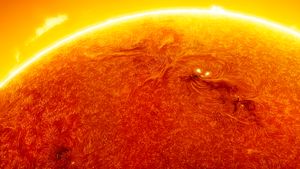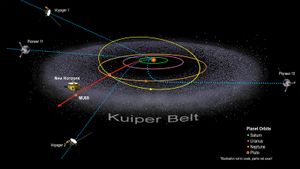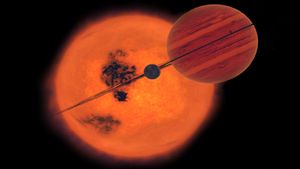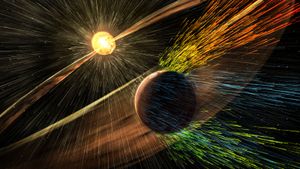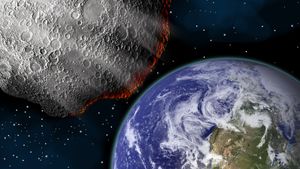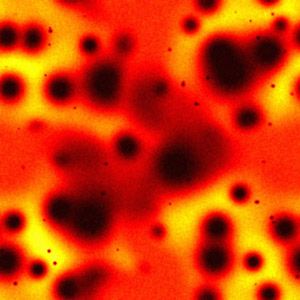Van Allen Radiation Belts are two zones encircling the low Earth orbit in which there are relatively large numbers of high-energy (fast-moving) charged particles. The particles are mainly protons and electrons, which are trapped within the belts by Earth's magnetic field.
A group of United States scientists, under the direction of Dr. James Van Allen, made the discovery in 1958, using information from Explorer I, America's first artificial satellite. When the team first discovered the belts, "the radiation was so intense that at first scientists thought they might be recording a Soviet nuclear test," according to NASA.
Van Allen learned that astronauts could safely fly through the radiation belts if they went through weaker regions. The Van Allen belts are centered along Earth's magnetic equator in a region of the upper atmosphere called the magnetosphere, or exosphere.
Radiation belt electrons are highly energetic electrons that are confined within the Earth's radiation belts:
- The inner belt extends from roughly 600 miles (1,000 km) to 3,700 miles (6,000 km) above the earth.
- The outer radiation belt extends from roughly 9,300 miles (15,000 km) to 15,500 miles (25,000 km) above the earth.
Scientists believe most of the particles that form the belts come from the solar wind, a continuous flow of particles emitted by the sun in all directions. Other particles probably have their origin in cosmic rays.
In the late 1950s and early 1960s, artificial radiation belts formed from charged particles produced by the detonation of nuclear explosives in space. These radiation belts, however, have weakened with time. The planets Jupiter and Saturn are encircled by radiation belts similar to the Earth's Van Allen radiation belts.
The Van Allen Belts and the Moon Landing
To travel to outer space, astronauts must pass high levels of radiation. For some, the existence of Earth's radiation belts is proof that we never landed on the moon. They argue that the level of radiation would have "instantly killed" the astronauts.
NASA says that astronauts "fly through this region quickly to limit their exposure to radiation" and that a deadly amount of radiation is 300 rads in one hour. The crew for the Apollo moon landing's radiation dosimeters measured "their total dosage for the entire trip to the moon and return was not more than 2 Rads over 6 days."
